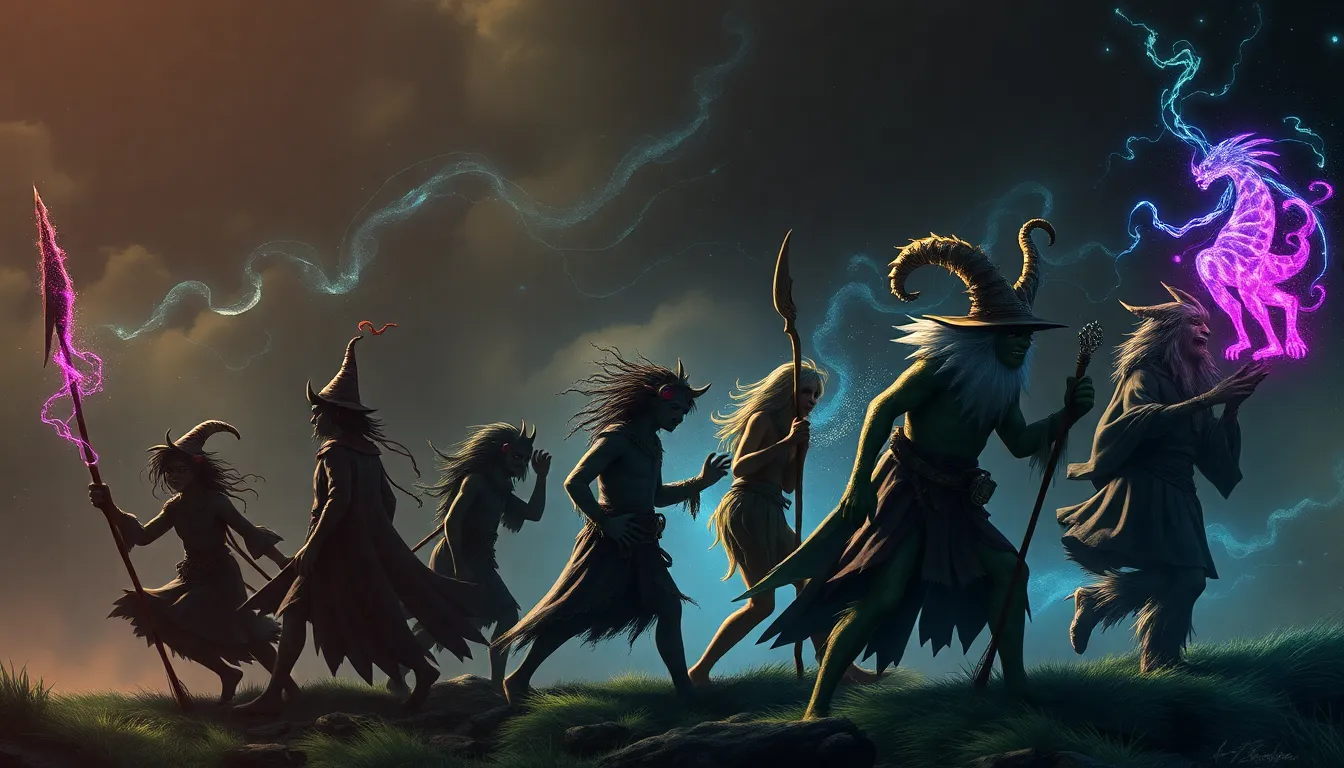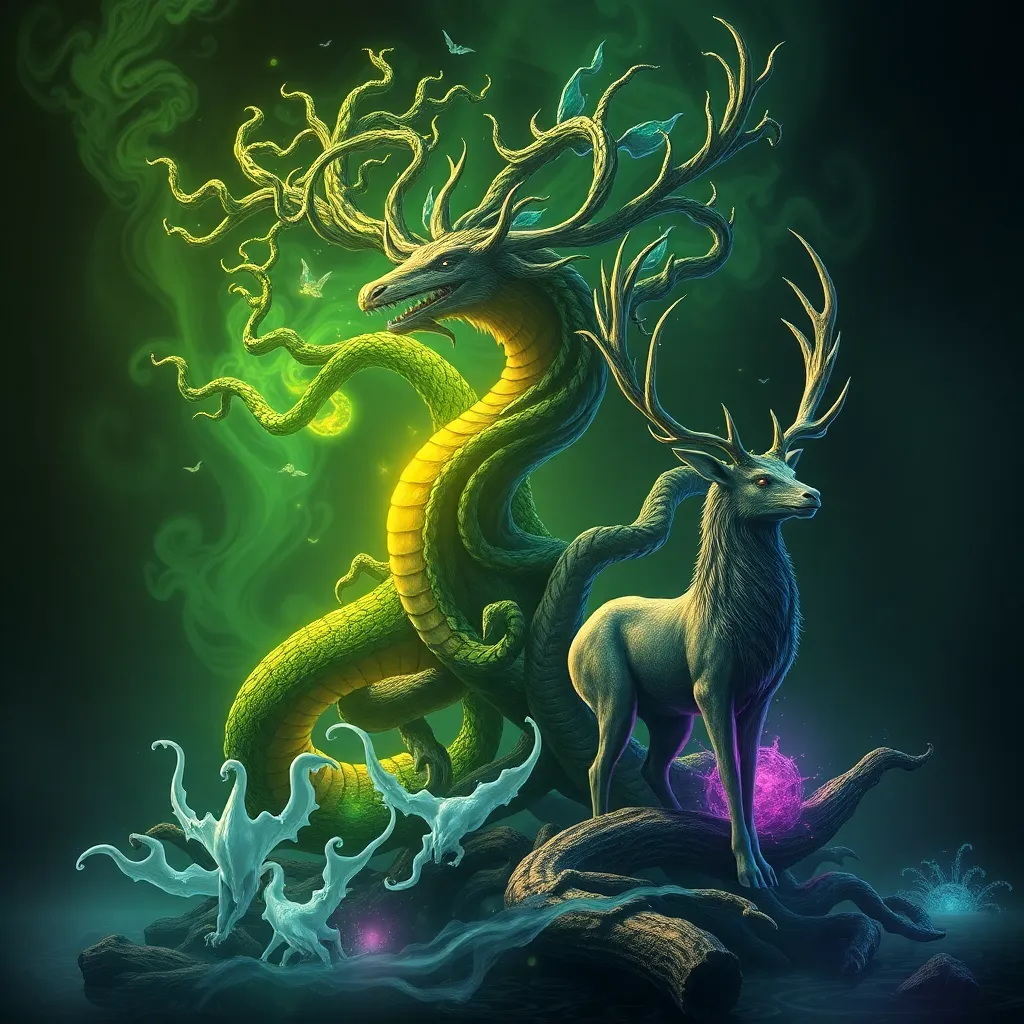The Evolution of Trickster Characters Through Time
I. Introduction
Trickster characters have long captivated audiences across cultures and time periods. Defined as figures that embody a combination of cunning, humor, and often a disregard for societal norms, tricksters play a crucial role in storytelling. They serve as agents of chaos, often challenging the status quo and highlighting the absurdities of life.
The importance of tricksters in mythology and literature cannot be overstated. They provide a unique lens through which to examine human behavior and societal constructs. This article explores the evolutionary journey of trickster characters, tracing their origins from ancient myths to modern media.
II. Ancient Roots: Tricksters in Myth and Folklore
Tricksters have ancient roots, often found in the folklore of various cultures. They embody archetypes that reflect the values and beliefs of their societies.
A. Trickster Archetypes in Indigenous Cultures
- Anansi in African Folklore: Anansi, the spider god, is a prominent figure in West African folklore. Known for his wit and cunning, Anansi often uses his intelligence to outsmart others, teaching moral lessons through his adventures.
- Coyote in Native American Mythology: Coyote is a central trickster figure in many Native American cultures. He is often portrayed as a creator and a destroyer, embodying both wisdom and foolishness, reflecting the duality of human nature.
B. Tricksters in Ancient Civilizations
- Loki in Norse Mythology: Loki is a complex figure known for his shape-shifting abilities and mischievous nature. His actions often lead to chaos among the gods, representing the unpredictable aspects of life.
- Hermes in Greek Mythology: Hermes, the messenger of the gods, is also known as a trickster. His quick wit and cleverness allow him to navigate the realms of gods and mortals, often bending the rules to achieve his goals.
III. The Medieval Period: Tricksters in Literature
The medieval period saw the rise of tricksters in literature, particularly through the portrayal of comic figures who entertained and challenged societal norms.
A. The Rise of the Comic Trickster in Literature
- The Role of the Fool in Shakespearean Plays: Shakespeare’s fools, such as Feste in “Twelfth Night,” utilize humor and wit to reveal truths about human nature, often serving as the voice of reason amid chaos.
- The Character of Reynard the Fox in Fables: Reynard is a cunning character who embodies the trickster’s ability to outwit others, often critiquing the moral failings of society.
B. Moral Ambiguity of Medieval Tricksters
Medieval tricksters often walked a fine line between hero and villain, reflecting the moral complexities of their time. They challenged authority and societal norms, prompting audiences to question traditional values.
IV. The Renaissance and Enlightenment: Expanding Trickster Roles
The Renaissance marked a shift towards individualism, allowing tricksters to explore themes of freedom and rebellion.
A. The Shift Towards Individualism and the Trickster’s Freedom
As society began to value individual expression, tricksters became symbols of personal autonomy, often challenging established norms and conventions.
B. Notable Tricksters in Renaissance Literature
- The Character of Don Juan: Don Juan is a quintessential trickster who seduces and deceives, embodying the spirit of rebellion against societal constraints.
- The Role of Satire in Trickster Narratives: Satirical works began to emerge, using trickster characters to critique politics and society, blending humor with social commentary.
V. The 19th Century: Tricksters in Folklore and Popular Culture
The 19th century saw the influence of colonialism on trickster narratives, as these characters began to reflect the complexities of cultural exchange.
A. The Influence of Colonialism on Trickster Narratives
Colonialism brought different cultures into contact, leading to the blending of trickster archetypes and the emergence of new narratives that highlighted resistance and resilience.
B. The Emergence of Tricksters in American Literature
- Mark Twain’s Tom Sawyer and Huckleberry Finn: Both characters exemplify the trickster spirit, challenging societal norms and navigating the complexities of morality.
- The Role of Brer Rabbit in African American Folklore: Brer Rabbit is a classic trickster who uses his intelligence to outsmart more powerful foes, representing the struggle against oppression.
VI. The 20th Century: Tricksters in Modern Media
The 20th century revolutionized the portrayal of tricksters, particularly with the advent of film and television.
A. Tricksters in Film and Television
- The Joker in DC Comics: The Joker is an iconic trickster who embodies chaos and anarchy, often using humor to mask his darker intentions.
- Bugs Bunny and the Animation Revolution: Bugs Bunny represents the classic trickster in animation, using cleverness and wit to outsmart his adversaries.
B. The Intersection of Tricksters with Pop Culture Movements
Tricksters began to intersect with various pop culture movements, reflecting societal changes and the evolving role of humor in social commentary.
VII. Postmodern Tricksters: Breaking Boundaries
Postmodern tricksters often defy expectations and challenge traditional narratives, embodying the complexities of contemporary society.
A. Characteristics of Postmodern Tricksters
Postmodern tricksters are characterized by:
- A self-aware, meta-narrative approach
- The blending of genres and styles
- A focus on subverting norms and expectations
B. Examples of Postmodern Trickster Characters
- Tyler Durden in Fight Club: Tyler embodies the postmodern trickster, challenging consumerism and societal expectations through chaos and rebellion.
- Deadpool in Marvel Comics: Deadpool breaks the fourth wall, using humor and irony to navigate his violent world, representing a new kind of trickster hero.
VIII. The Role of Tricksters in Social Commentary
Throughout history, tricksters have served as agents of change, using humor and satire to critique societal norms and provoke thought.
A. Tricksters as Agents of Change and Reflection
By challenging authority and societal expectations, tricksters often highlight the absurdities of life, encouraging audiences to reflect on their values and beliefs.
B. The Use of Humor and Satire in Social Critique
Humor and satire are powerful tools used by tricksters to address serious issues, making complex ideas more accessible and prompting critical thinking.
IX. The Future of Trickster Characters
As society continues to evolve, so too will the portrayal of trickster characters. They will likely adapt to reflect contemporary issues and the changing landscape of culture and storytelling.
The enduring appeal of tricksters lies in their ability to resonate with audiences, providing insights into the human experience while entertaining and provoking thought. Whether through ancient myths or modern media, tricksters will continue to play a vital role in storytelling for generations to come.




